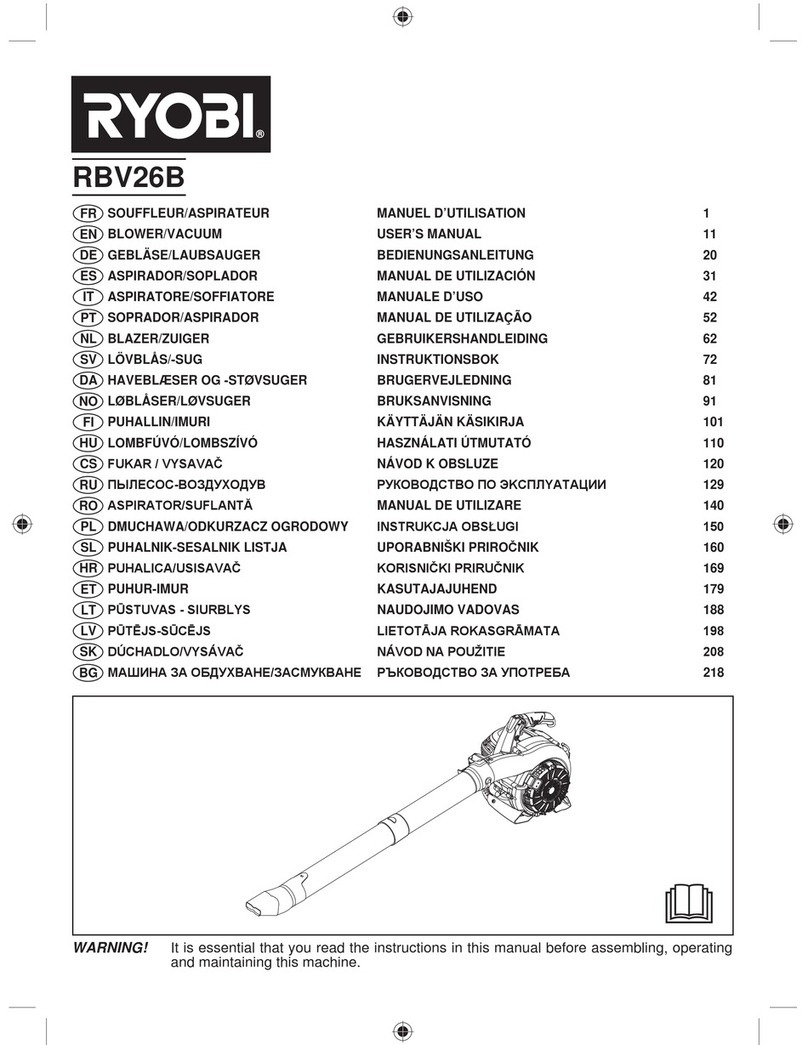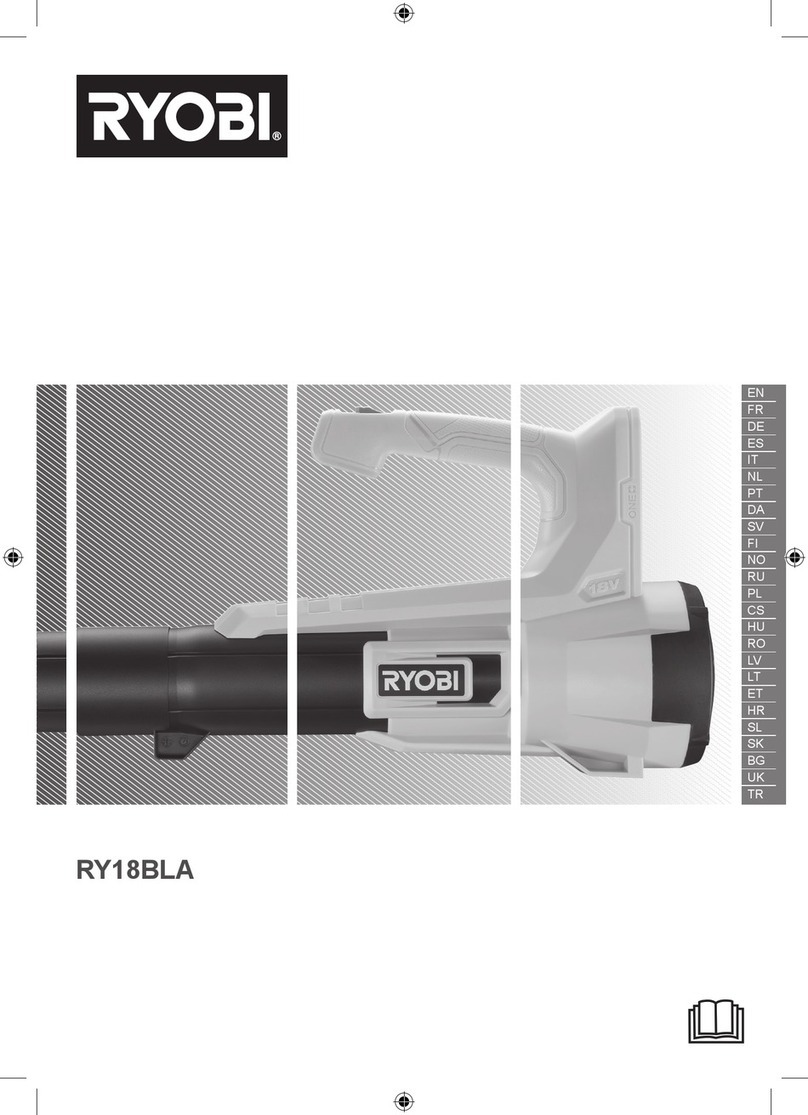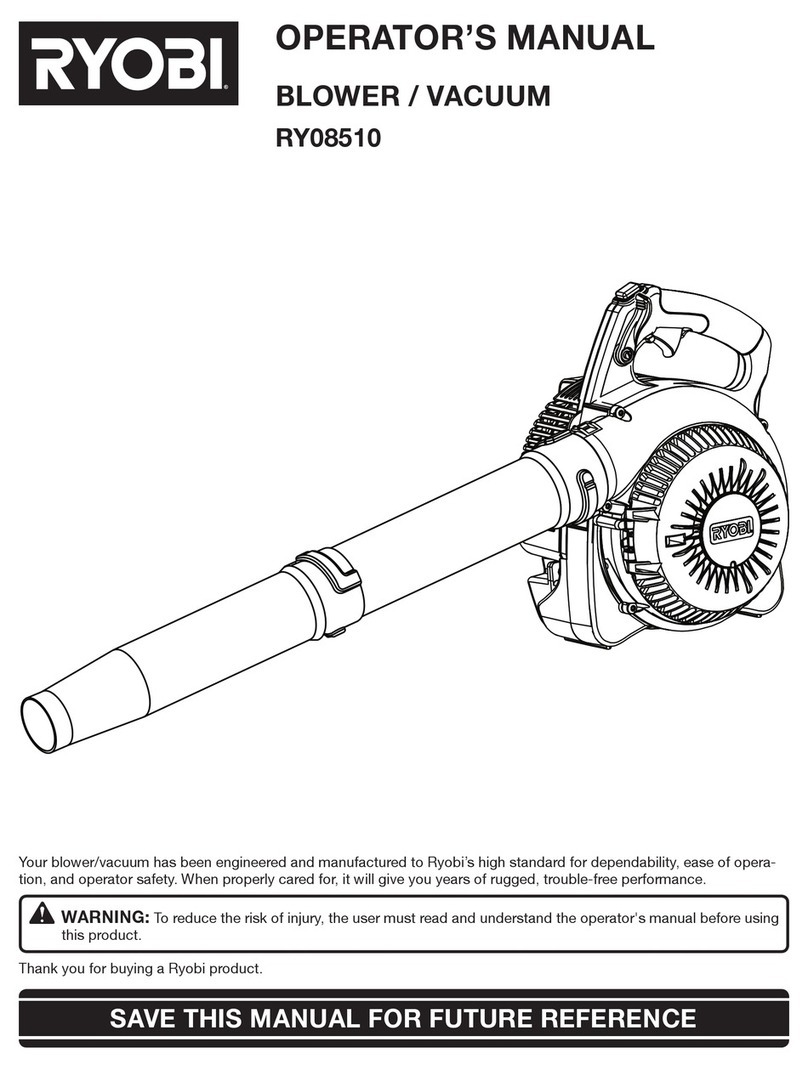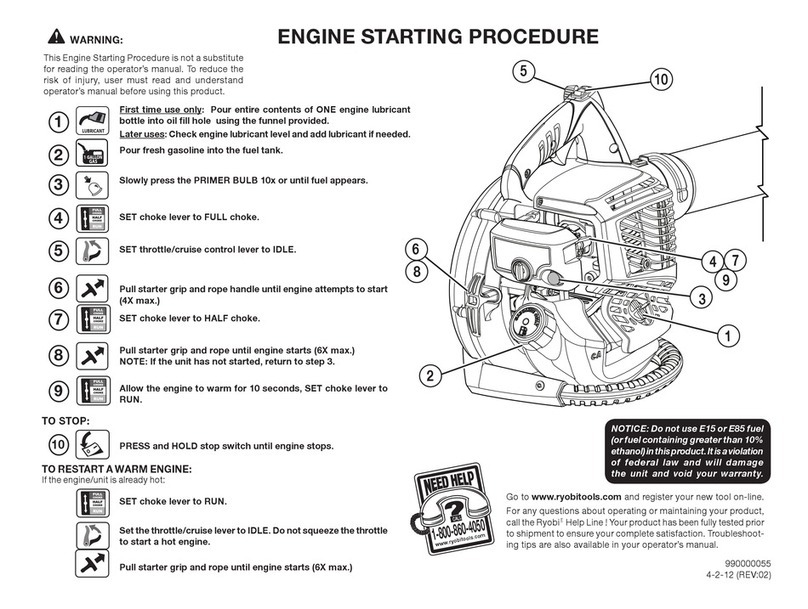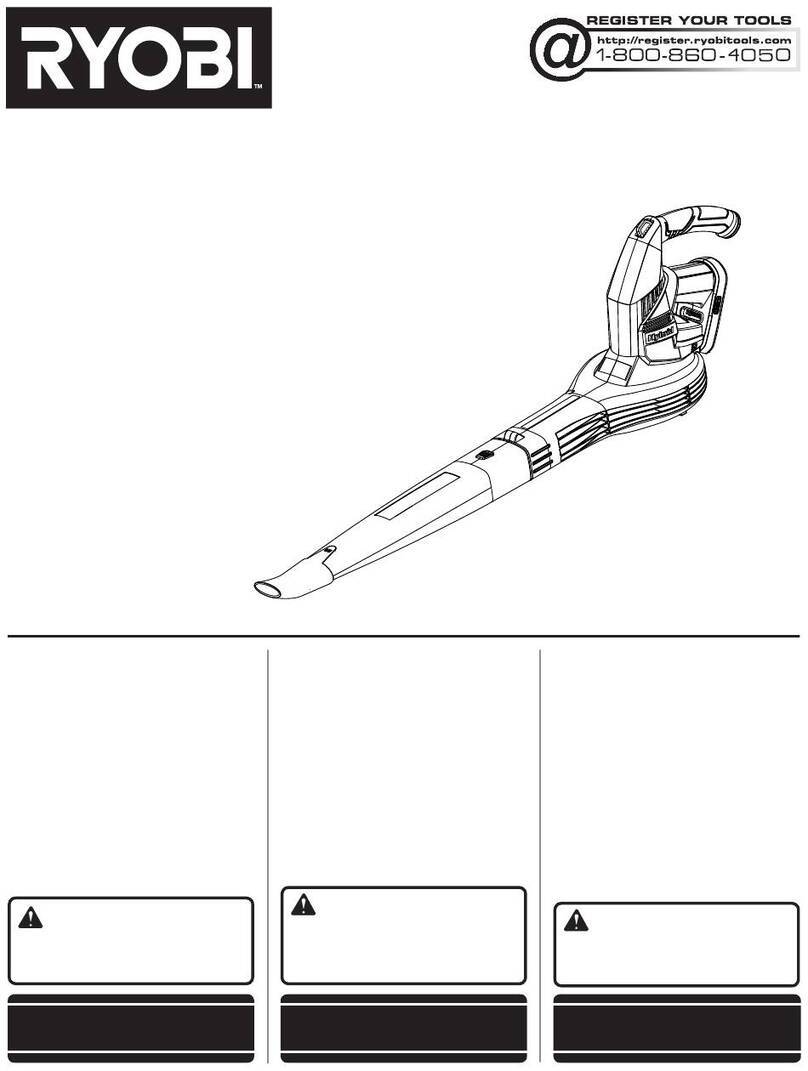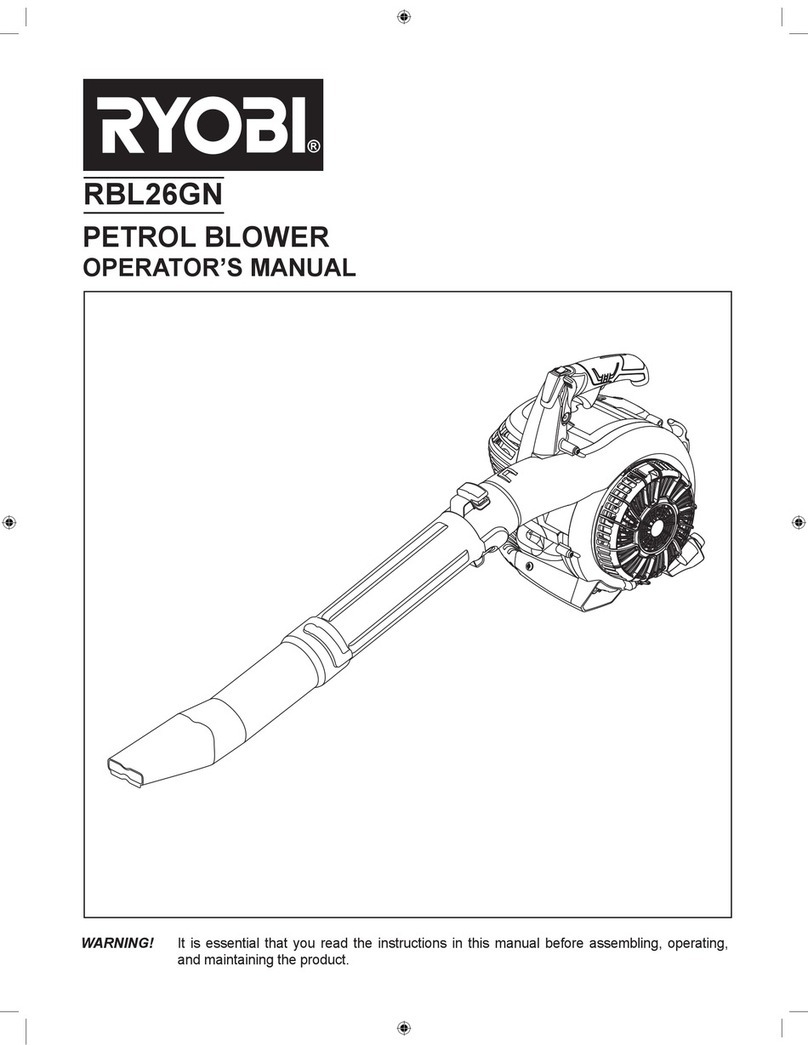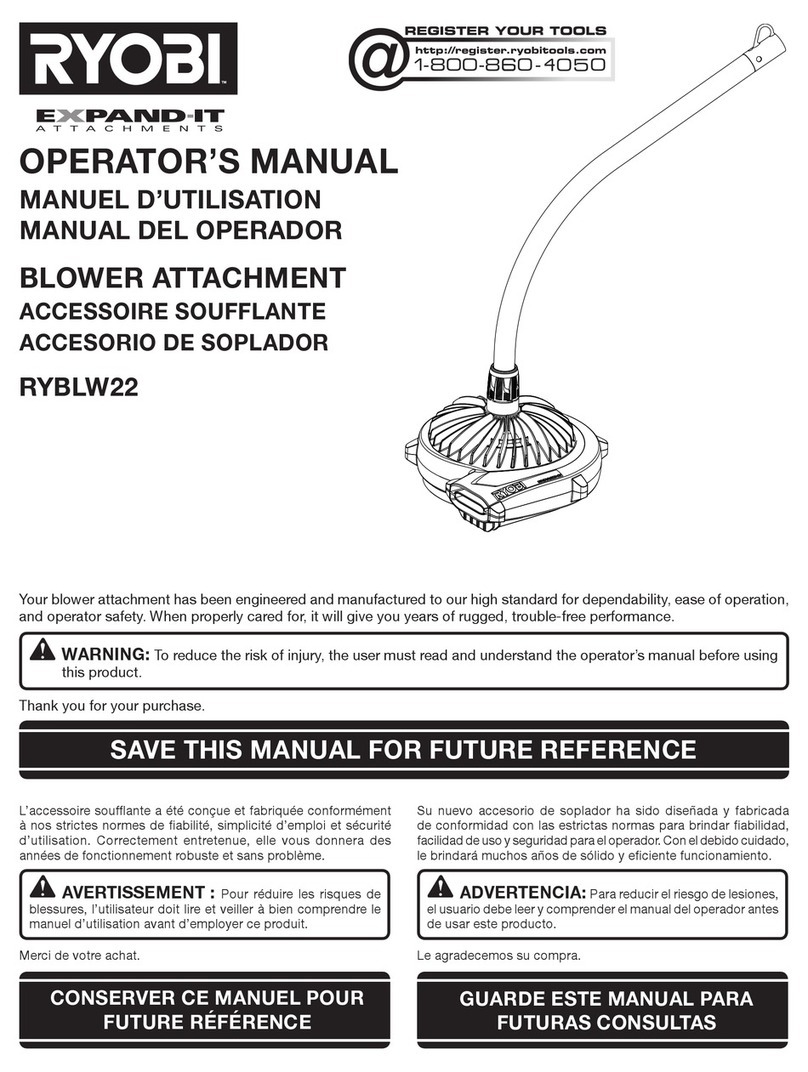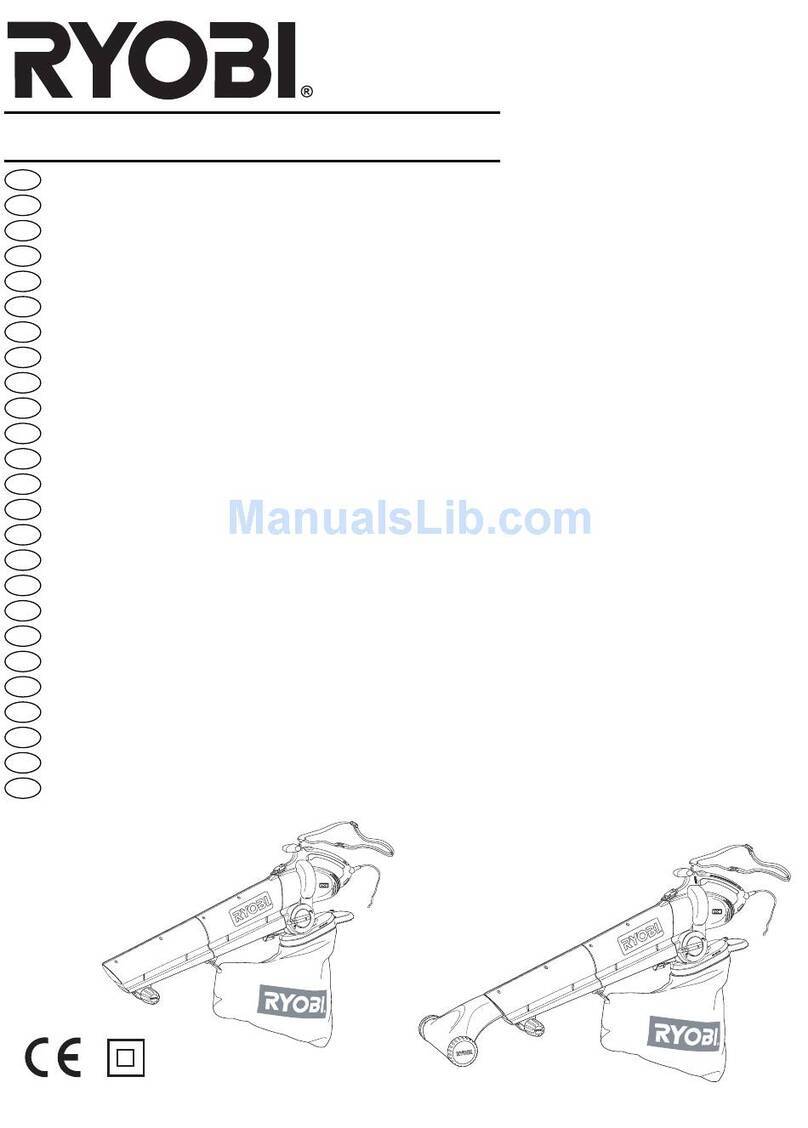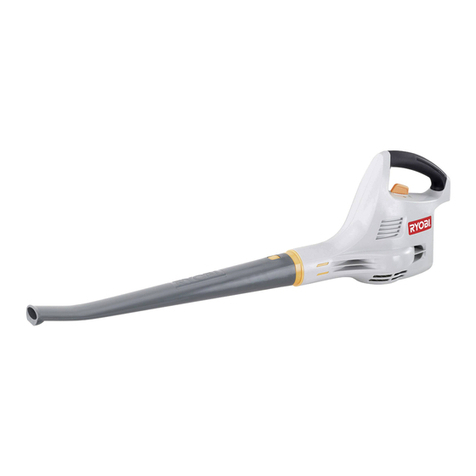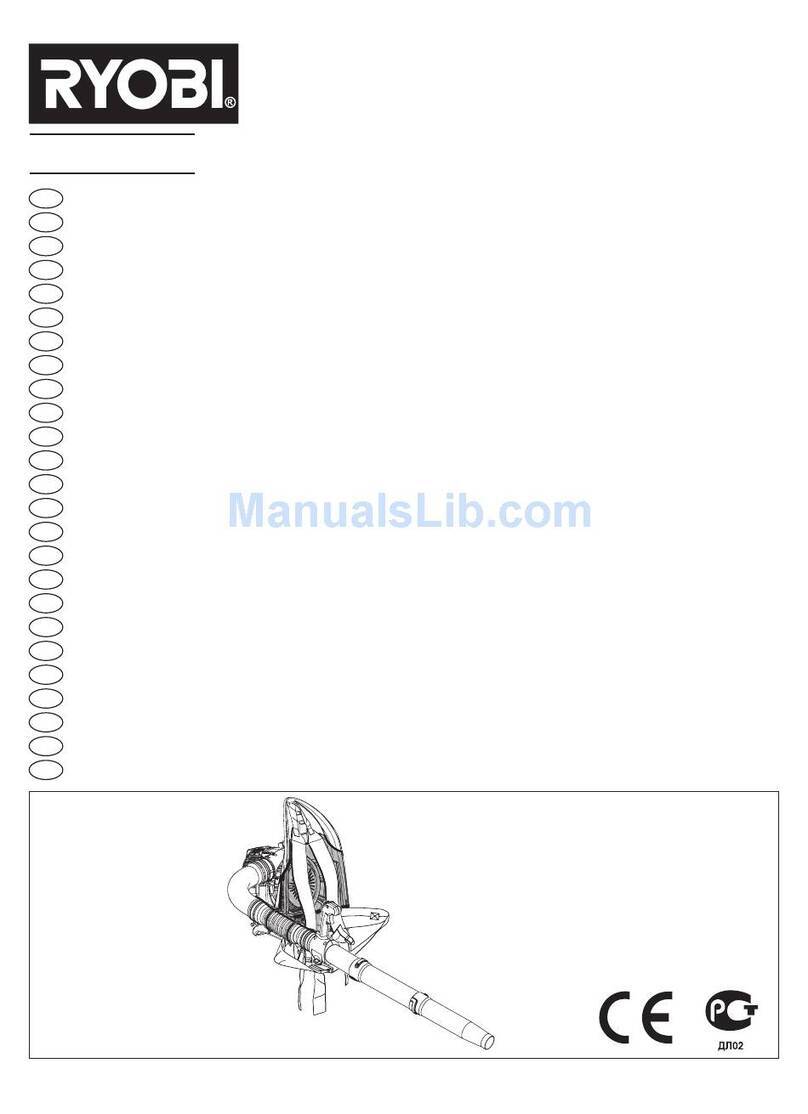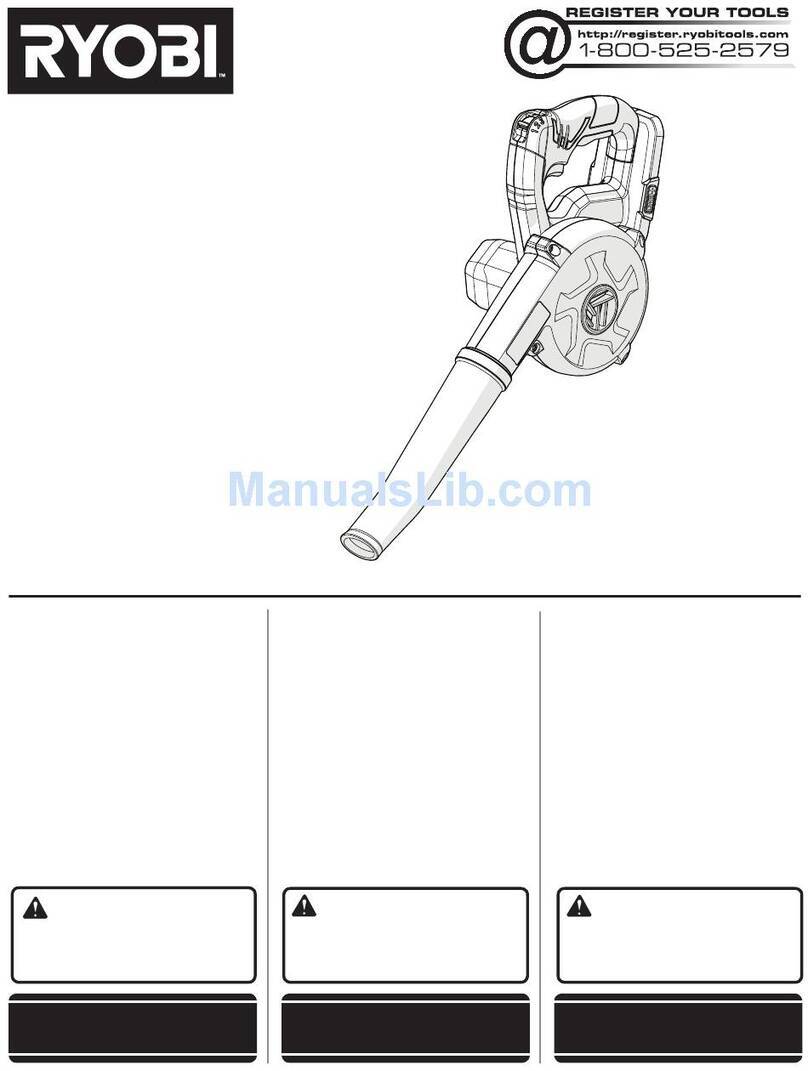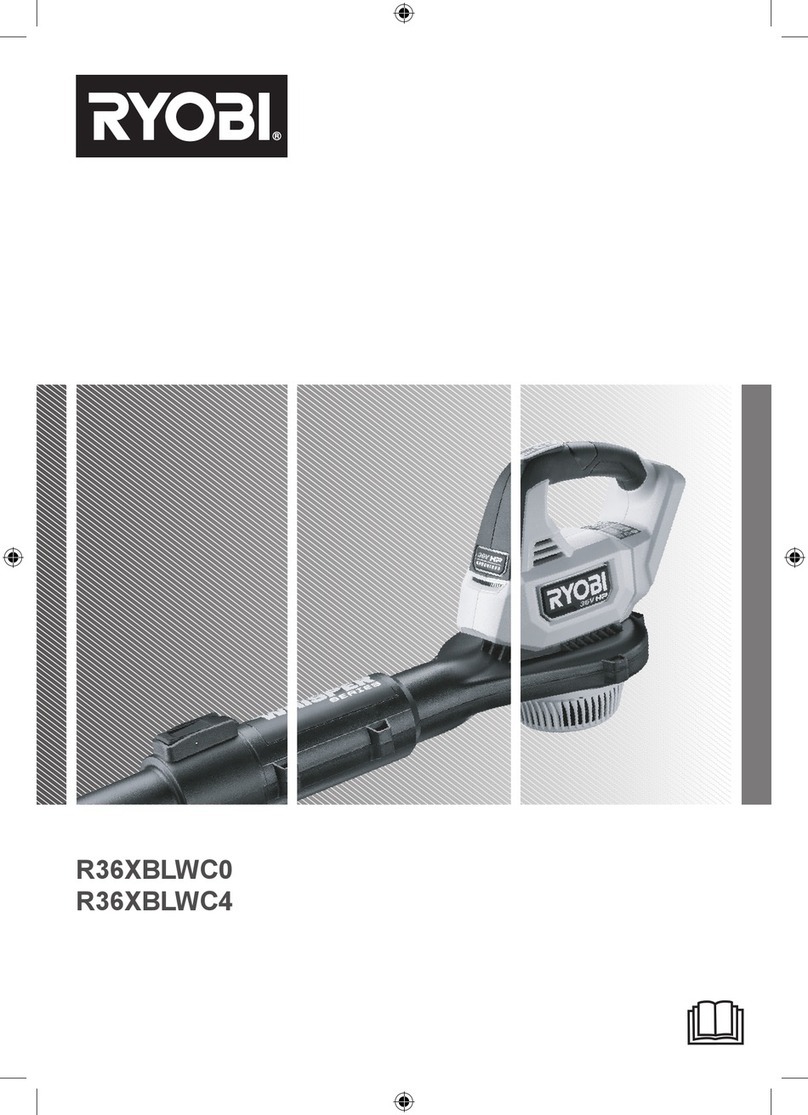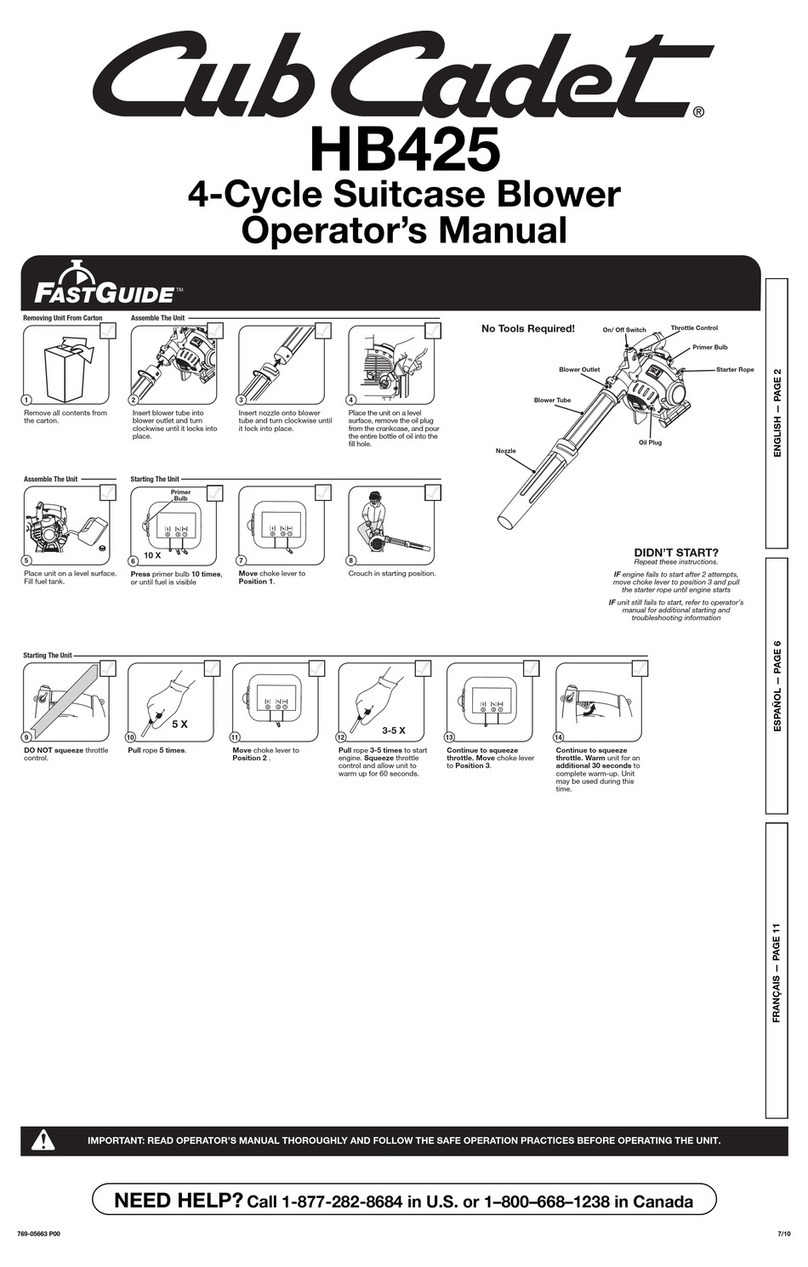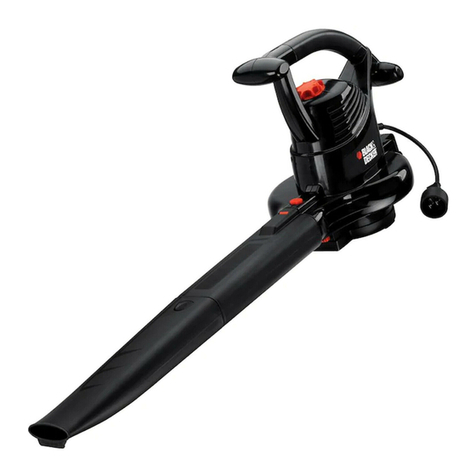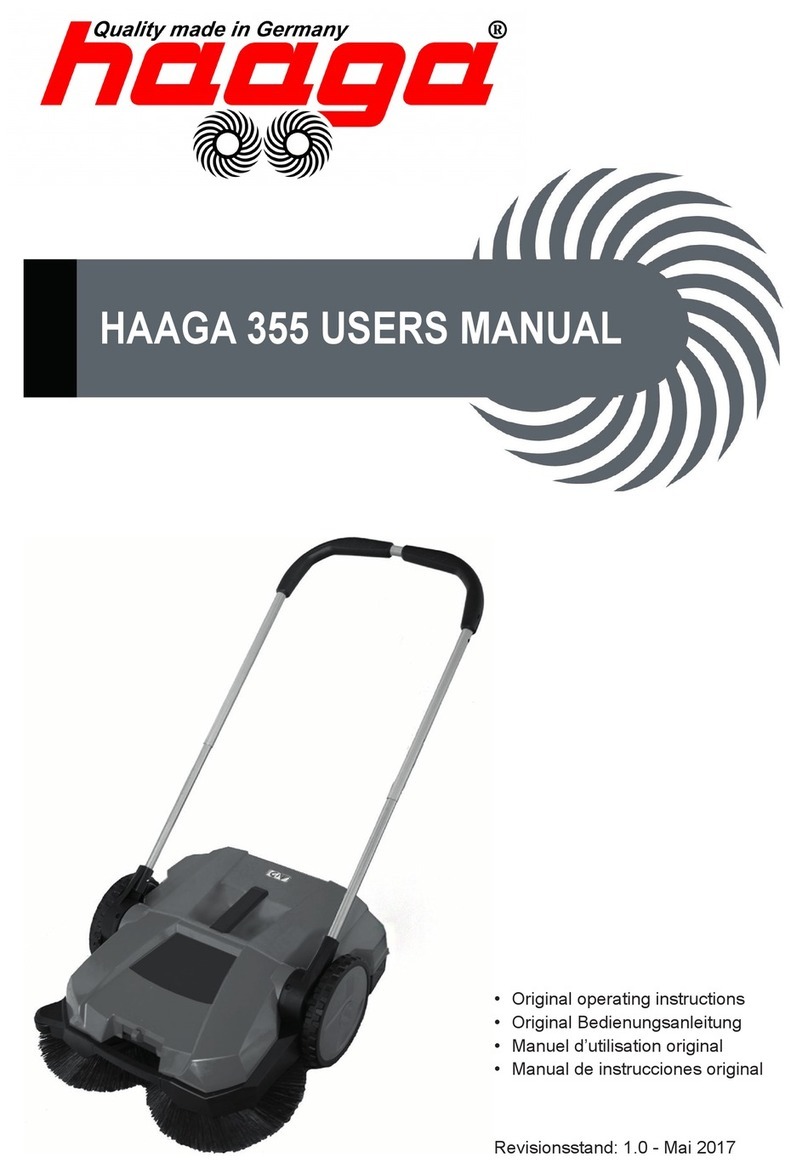RULES FOR SAFE OPERATION
3
• IMPORTANT SAFETY INFORMATION •
READ ALL INSTRUCTIONS
BEFORE OPERATING
•Read the instructions carefully. Be familiar with the controls
and proper use of the unit.
•Inspect the unit before use. Replace damaged parts. Check
for fuel leaks. Make sure all fasteners are in place and
secure. Failure to do so can result in personal injury to the
operator and bystanders, as well as damage to the unit
•Be aware of the risk of injury to the head, hands and feet.
•Clear the area of children, bystanders, and pets. At a
minimum, keep all children, bystanders and pets outside a
15 meters. (50 ft.) radius; there still may be a risk to
bystanders from thrown objects. Bystanders should be
encouraged to wear eye protection. If you are approached,
stop the engine immediately.
SAFETY WARNINGS FOR PETROL UNITS
WARNING: Petrol (gasoline) is highly flammable, and its
vapors can explode if ignited. Take the following precautions:
•Store fuel only in containers specifically designed and
approved for the storage of such materials.
•Avoid creating a source of ignition for spilled fuel. Do not
start the engine until fuel vapors dissipate.
•Always stop the engine and allow it to cool before filling the
fuel tank. Never remove the cap of the fuel tank, or add fuel,
when the engine is hot. Never operate the unit without the
fuel cap securely in place. Loosen the fuel tank cap slowly to
relieve any pressure in the tank.
•Remove the vacuum bag before refueling.
•Mix and add fuel in a clean, well-ventilated area outdoors
where there are no sparks or flames. Slowly remove the
fuel cap only after stopping engine. Do not smoke while
fueling or mixing fuel. Wipe up any spilled fuel from the unit
immediately.
WHILE OPERATING
•Never start or run the unit inside a closed room or building.
Breathing exhaust fumes can kill. Operate this unit only in a
well ventilated area outdoors.
•Wear safety glasses or goggles and ear/hearing protection
when operating this unit. Wear a face or dustmask if the
operation is dusty. Long sleeve shirts are recommended.
•Never run the unit without the the proper equipment
attached. When using this unit, always install the
blower/vacuum tube, vacuum bag and make sure
the vacuum bag is completely zipped closed.
•Stop and switch the engine to off for maintenance, repair, to
install or remove the blower/vacuum tubes or vacuum bag.
The unit must be stopped and the impeller no longer turning
to avoid contact with the rotating blades.
•Avoid accidental starting. Be in the starting position whenev-
er pulling the starter rope. The operator and unit must be in a
stable position while starting. See Starting/Stopping
Instructions.
•Do not overreach. Always keep proper footing and balance.
•Do not touch the engine or muffler. These parts get
extremely hot from operation. When turned off they remain
hot for a short time.
•Do not operate the unit with loose or damaged parts. Do not
operate before repairing damage.
•Use only genuine Ryobi replacement parts when servicing
this unit. These parts are available from your authorized
service dealer. Do not use parts, accessories or attachments
not authorized by Ryobi for this unit. Doing so could lead to
serious injury to the user, or damage to the unit, and void
your warranty.
•Do not set unit on any surface except a clean, hard area
while engine is running. Debris such as gravel, sand, dust,
grass, etc. could be picked up by the air intake and thrown
out by the discharge opening, damaging unit, property, or
causing serious injury to bystanders or operator.
•Keep hands, face, and feet at a distance from all moving
parts. Do not touch or try to stop the impeller when it is
rotating.
•Never use this unit for spreading chemicals, fertilizers, or
other substances which may contain toxic materials.
WHILE OPERATING UNIT AS A BLOWER
•Never point the Blower in the direction of people or pets, or
in the direction of windows. Always direct the blowing debris
away from people, animals, glass, and solid objects such as
trees, automobiles, walls, etc.
WHILE OPERATING UNIT AS A VACUUM
•Avoid situations that could catch the vacuum bag
on fire. Do not operate near an open flame. Do not
vacuum warm ash from fireplaces, barbecue pits, brush
piles, etc. Do not vacuum discarded cigars or cigarettes
unless the cinders are completely cool.
•The unit is designed to pickup dry material such as leaves,
grass, small twigs and bits of paper. Do not attempt to
vacuum wet debris and/or standing wateras this may result
in damage to the Blower/ Vacuum. To avoid severe damage
to the impeller, do not vacuum metal, broken glass, etc.
OTHER SAFETY WARNINGS
•Allow the engine to cool before storing or transporting. Be
sure to secure the unit while transporting.
•Store the unit in a dry area, locked up or up high, to prevent
unauthorized use or damage. Keep out of
the reach of children.
•Never douse or squirt the unit with water or any other liquid.
Keep handles dry, clean and free from debris. Clean after
each use, see Cleaning and Storage instructions.
SAVE THESE INSTRUCTIONS
